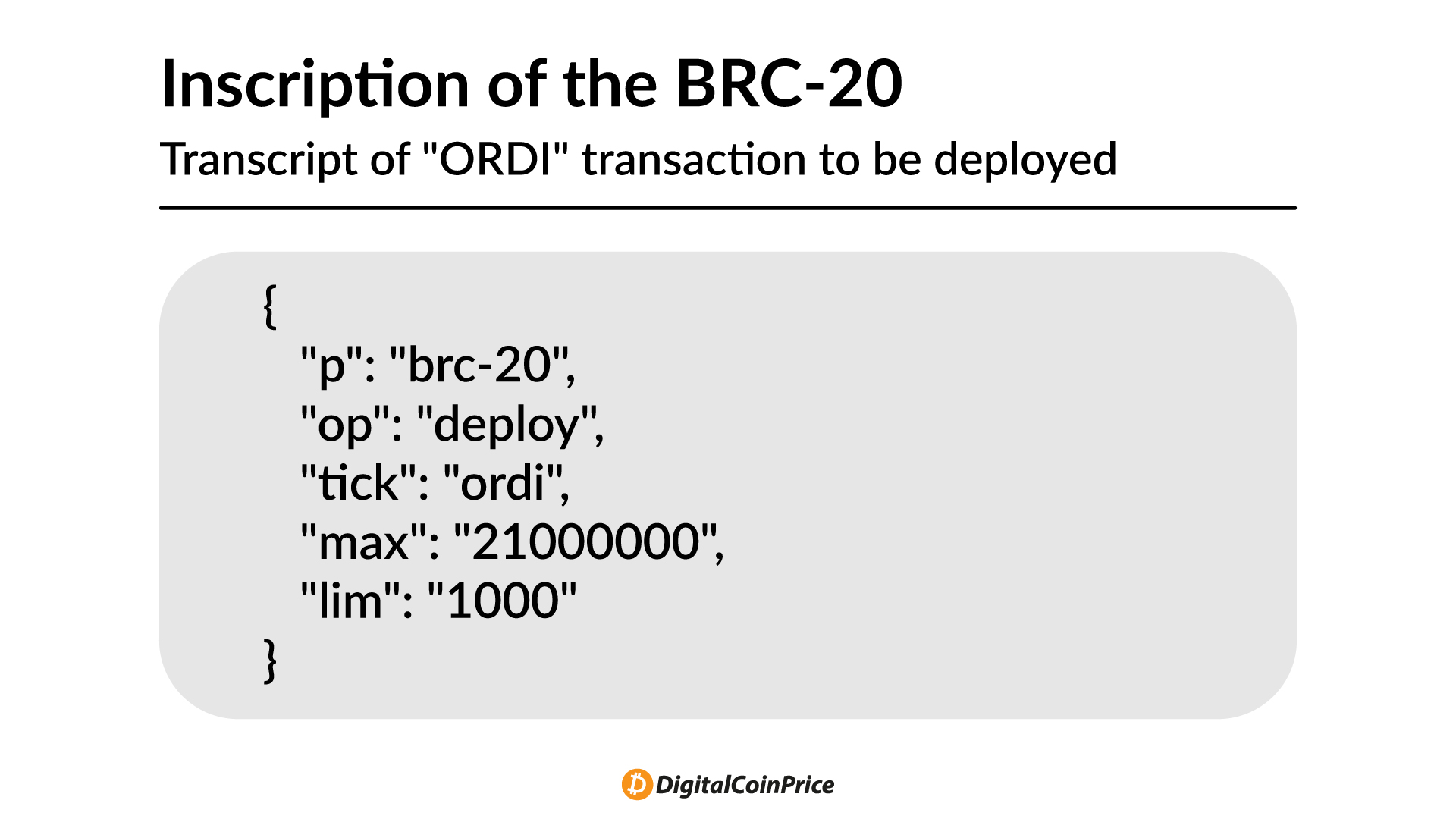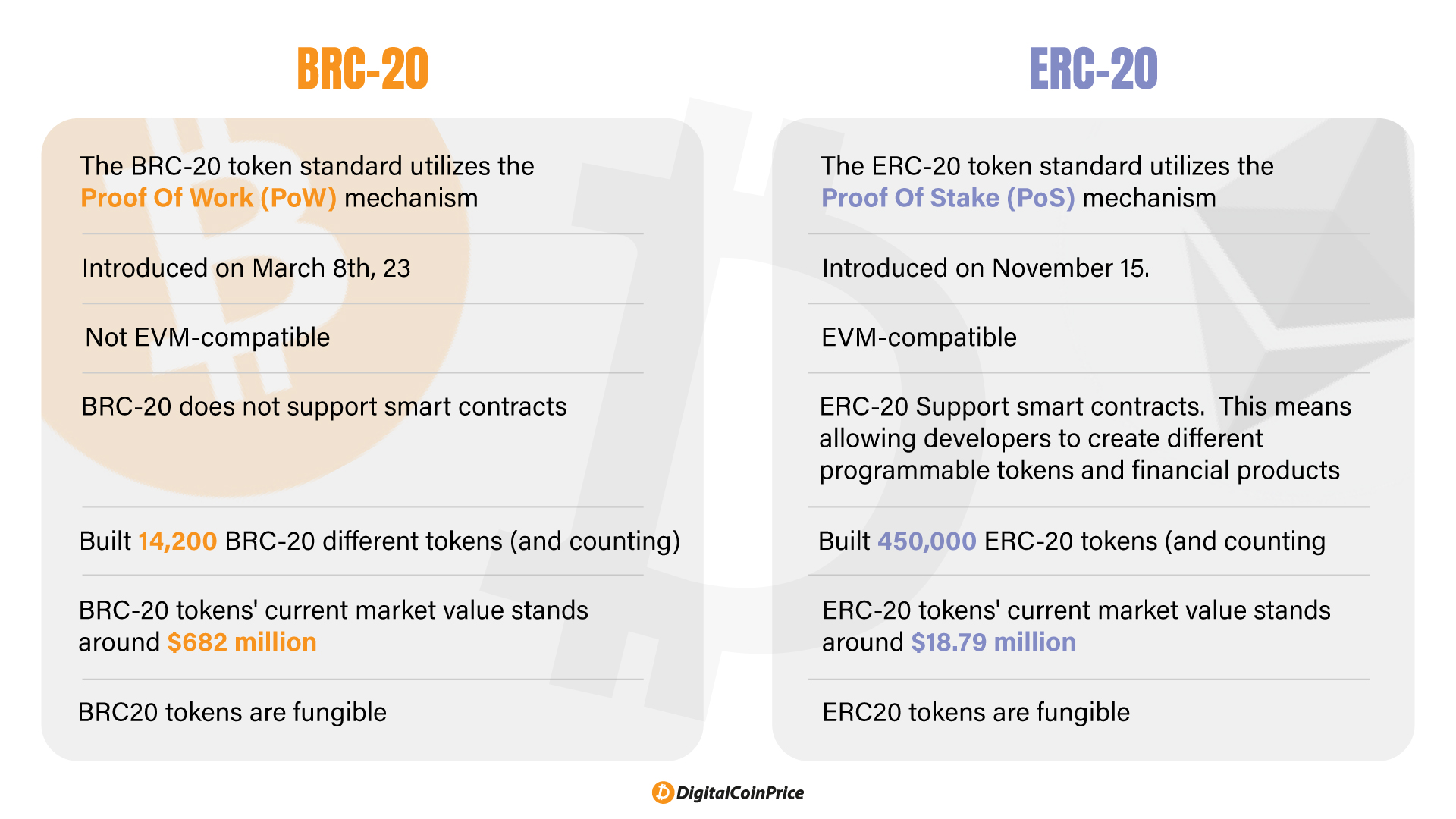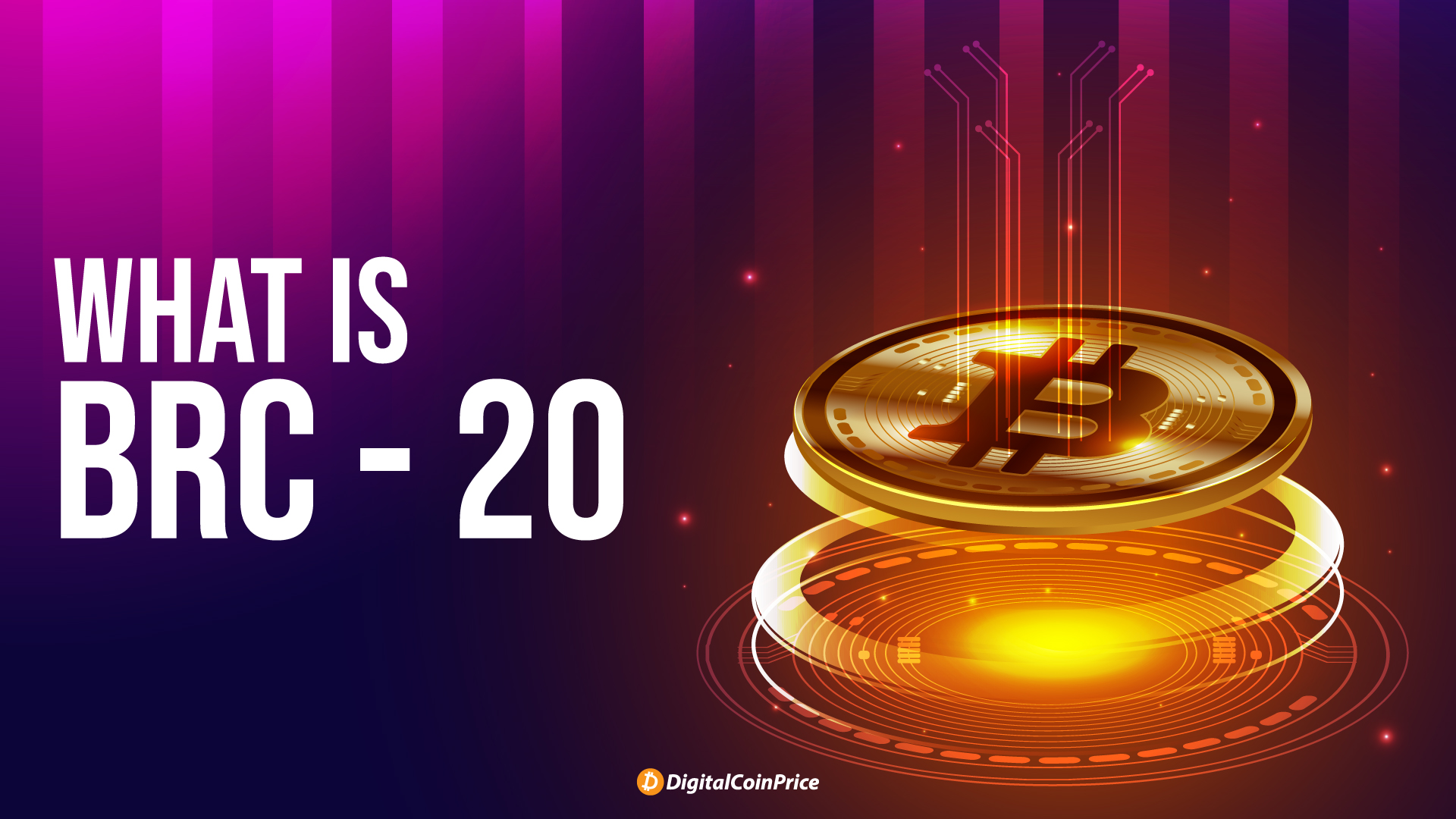With the Bitcoin blockchain’s BRC-20 tokens hitting 14,200 tokens, the market cap approaches $1 billion.

Key Takeaways:
- The BRC-20 token standard is an experimental token for the Bitcoin blockchain. BRC-20 is inspired by Ethereum’s ERC-20. Using the Ordinary protocol, developers can create and transfer fungible tokens with BRC_20.
- Smart contracts are not used in BRC-20 like they are in ERC-20. For token deployment, minting, and transfer, JSON data is used.
- ORDI, the first BRC-20 token, was minted using the BRC-20 standard (as of writing) with 14,200 tokens (and counting).
- Approximately $1 billion is worth of BRC-20 tokens, which number 14,200.
Brief Introduction to BRC-20
For the Bitcoin blockchain, the BRC-20 token standard is a fungible token standard. Bitcoin contracts are deployed, and tokens are minted using ordinal inscriptions in JavaScript Object Notation (JSON). Similarly to other tokens, they can be traded and swapped.
ERC-20 token standards sound similar, but there are key differences between BRC-20 and ERC-20. Because BRC-20 is on Bitcoin’s blockchain, it utilizes a proof-of-work mechanism, whereas ERC-20 uses a proof-of-stake mechanism.
DeFi tokens are more popular in the DeFi community than BRC-20 tokens mainly because ERC-20 tokens support smart contracts. Programmable money can be created with smart contracts and automated financial processes, and new financial products can be created. Despite this limitation, the popularity of BRC-20 tokens such as ORDI, PEPE, and PUNK is still high.
Here is a list of BRC-20 tokens
Brief History of BRC-20
Binance Smart Chain (BSC) is the key to BRC-20’s history. The Binance blockchain project was introduced in September 2020 as a faster, cheaper alternative to Ethereum. In addition to becoming a hub for DeFi initiatives, BRC-20 quickly became popular with developers and users. Due to its ease of use, low cost, and compatibility with existing Ethereum infrastructure, it has gained widespread popularity.
Tokens created for the BRC-20 standard were originally kept on the Bitcoin base chain using Ordinals and Inscriptions. The Ordinals protocol, a cryptocurrency standard, allows users to store any file on the Bitcoin blockchain through this token standard.
In January 2023, NFT (non-fungible token) came into the Bitcoin blockchain (BRC-20) by launching the first BRC-20 token named Ordinals (ORDI). Images, videos, and audio are all examples of digital assets that can be recorded, transferred, and utilised with the Ordinals protocol – which are all independent and cannot be interchanged.
In addition, Ordinals’ technology makes it possible to write text directly on the Bitcoin blockchain itself. With BRC-20, this text represents fungible tokens that are mutually interchangeable 1 to 1 and identical in every way.
Take a look at the screenshot below. According to the 5/8/2023 market capitalization chart, the token with the highest market cap is the “ORDI” BRC-20 token.

Inscriptions on BRC-20 don’t have much to offer, as seen above.
“P”: BRC-20 token standard is being followed by the issuance of the tokens.
“Op”: the operation deploying or initializing “ordi” tokens is invoked in this transaction.
“Token ticker”: This will be “ORDI.”
“Maximum”: computer tokens are limited to 21,000,000.
“lim”: 1,000 “ordi” could be produced (theoretically) in a single transaction.
How do BRC-20 Tokens Work?
To better understand BRC-20 tokens, you need to know how Bitcoin Ordinals work. With the Ordinals protocol, satoshis are numbered, and users can add extra data by adding it to them.
As part of the deployment, minting, and transfer of BRC-20 tokens, Ordinal (ORDI) encodings of JSON (JavaScript Object Notation) data are used. Currently, BRC-20 tokens can be created using the deploy function in the specification. The mint and transfer functions also allow you to mint and transfer BRC-20 tokens.
There is no user-friendly way to deploy, mint, and transfer BRC-20 tokens. Tools and services are also insufficient & need to be improved.
Top 10 cryptocurrencies for 30X gains in 2023
What is the difference between a BRC-20 token and an ERC-20 token?
Both tokens are remarkably different despite their similar names.
Difference between BRC-20 & ERC-20

Ethereum uses the ERC-20 standard, whereas Bitcoin uses BRC-20. Smart contracts are not used by BRC-20 tokens, so their functionality is limited. Conversely, ERC-20 tokens are compatible with a wide range of protocols and applications, allowing them to be used to lend and borrow.
Many ERC-20 tokens have been created and are widely used, making it a mature token standard. The ERC-20 token has been battle-tested since it was introduced in 2015, and it has been recognized as a standard in 2017. The case is different with BRC-20 tokens, whose future is highly uncertain.
BRC20: Benefits and Limitations
Tokens based on BRC-20 have both benefits and limitations. In addition to its fungibility and security, it is also compatible. Due to its incompatibility with EVM (Ethereum Virtual Machine), it is limited.
In addition to not being compatible with the EVM, developers cannot access or build resources on the network. Consequently, the ecosystem might be smaller and adoption might be limited. Due to BRC-20’s large block size and network congestion, there is also the possibility of increased gas fees on the network.
The security of Bitcoin remains high despite these limitations. Users can seamlessly transfer tokens on the blockchain thanks to the PoW mechanism, which makes it difficult for hackers to penetrate.
As opposed to the Ethereum Network, the Bitcoin blockchain can’t create any other tokens. In the future, the Layer-1 blockchain will have more possibilities with BRC-20 and Ordinals.
Ethereum(ETH) price predictions for 2023, 2024, and 2025
First BRC-20 token, Ordinals (ORDI)
The first BRC-20 token created was the ORDI token. It was designed to highlight the potential of the upcoming standard. A total of 21 million tokens were available in the ORDI deployment. There were a total of 1,000 tokens per mint.
The BRC-20 token has been minted and accessed by multiple startups since the creation of ORDI. ORDI tokens cannot be directly claimed since the supply cap has been reached; holders must buy them from each other.
Tokens in the BRC-20 family have continued to grow as individuals experiment with the technology by creating meme tokens. The BRC-20 website provides details regarding on-chain transactions for these tokens.
How will BRC-20 progress?
Bitcoin has just one token, which makes the ecosystem unique. The Ethereum Virtual Machine (EVM), introduced by Ethereum, allows multiple tokens to be created on the platform.
Introducing ordinals and the BRC-20 token standard has opened up more opportunities for creativity and excitement. Using a BRC-20 token on the Bitcoin blockchain is simple but powerful.
This standard is still experimental, which means you should conduct your research and have a trusted source on hand when implementing.
